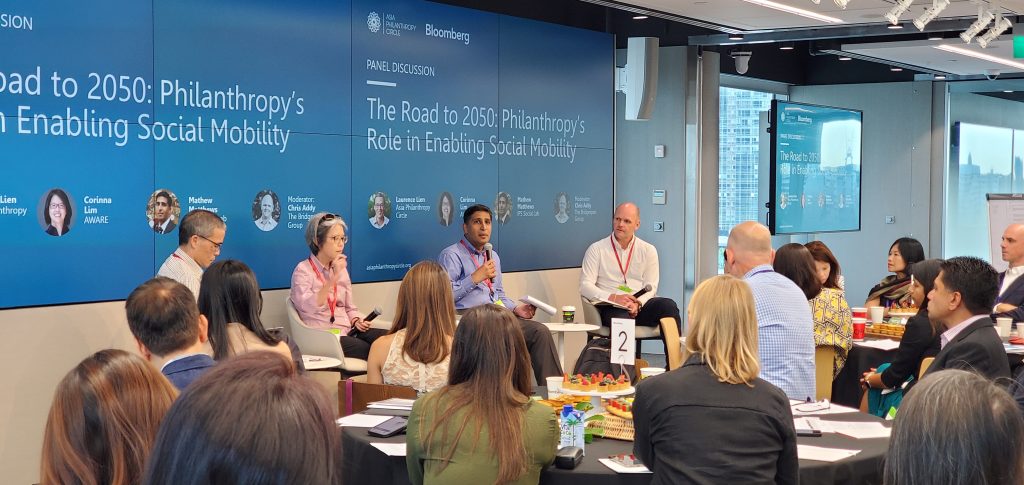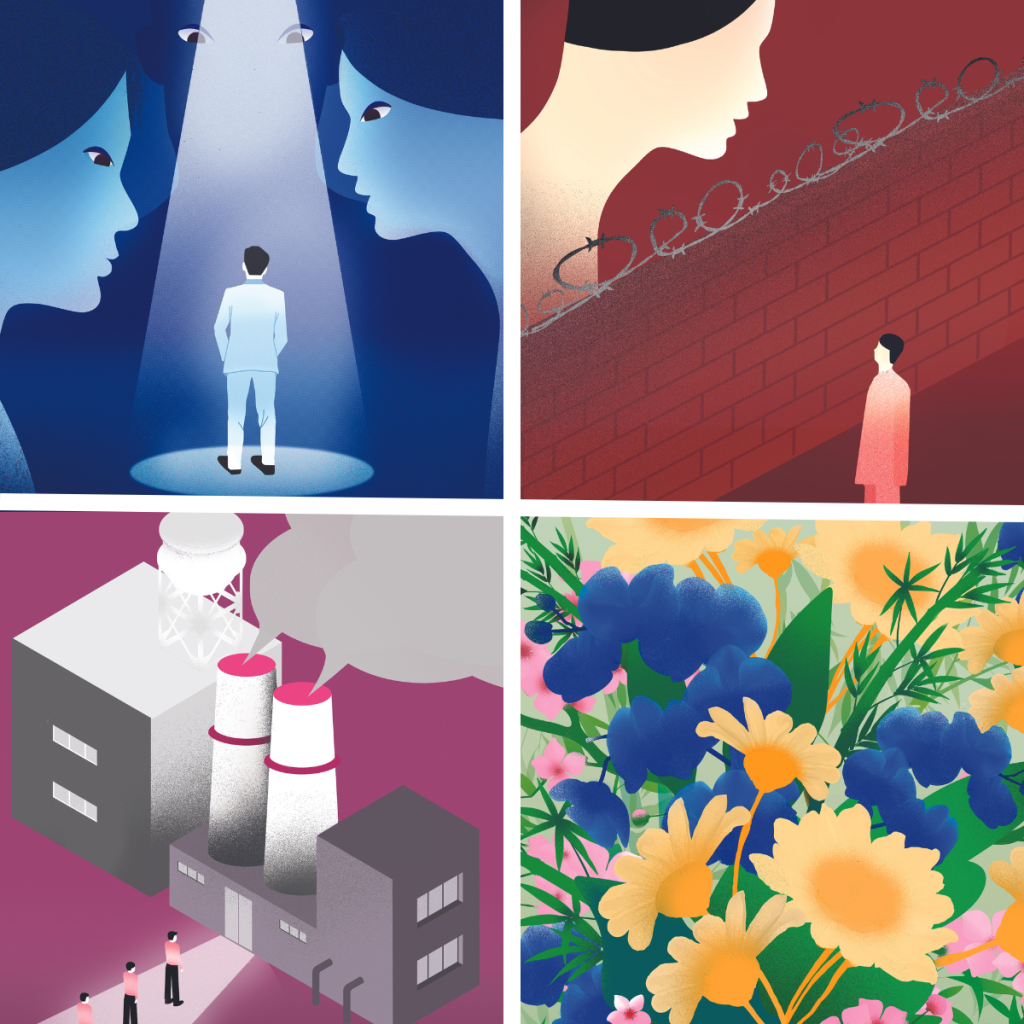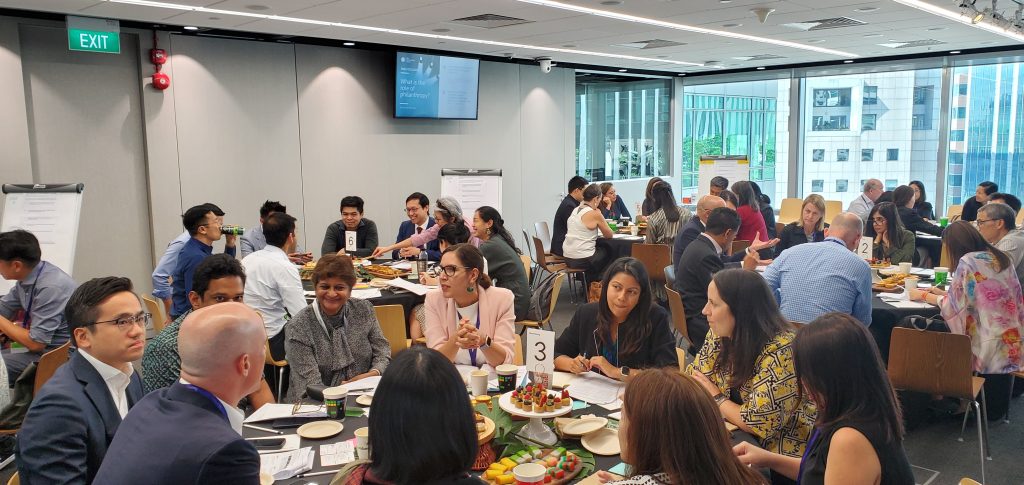BY SARAH TAM AND KOON PENG OOI, ASIA PHILANTHROPY CIRCLE

In March, Asia Philanthropy Circle (APC) and Bloomberg co-hosted the Singapore launch of APC’s Future of Asian Philanthropy, a two-part research study that explores how Asian society might look in 2050, and how philanthropy can fulfil its promise as a positive, impactful force in society.
Using scenario planning, the report envisions four future scenarios based on three fundamental ‘Driving Forces” that are shaping society in Asia:

- State’s Perception of Itself
How the state views its role in society, and how effectively it fulfils that role - Attitudes Towards Wealth Inequality
How does society view and expect to address this? - Extent of Societal Cooperation
How will different actors in society come together?
The launch event brought together a diverse group of philanthropists, private wealth professionals, government, thought leaders, NGOs who reflected on the current society attitudes towards wealth inequality in Singapore, and discussed how philanthropy can help enable social mobility and adapt to the changing landscape of the society.
With rising wealth, evolving societal needs, and an ever-changing climate, how might philanthropy contribute to a positive, collective future for all in Asia?
Road to 2050: Philanthropy’s Role in Building Social Mobility
In a panel discussion moderated by Chris Addy (The Bridgespan Group), Laurence Lien (Lien Foundation), Dr Mathew Mathews (IPS Social Lab, LKYSPP), and Corinna Lim (AWARE) shared their perspectives on how one particular driving force, ‘Attitudes towards Wealth Inequality’ is shaping thinking around social mobility in Singapore today.
Here are some considerations for philanthropy from the panellists:
- Look beyond the numbers: Philanthropy is increasingly driven by data, which can help measure impact and justify funding decisions. However, it’s essential to look beyond the numbers to truly understand the realities on the ground. For instance, official homelessness rates may be low in Singapore, but they fail to account for the challenges faced by low-income women who are frequently forced to move from one home to another. To create meaningful change, philanthropists should seek to understand the lived experiences of those they seek to help and address the systemic issues that underlie the data.
- Shifting mental models and building empathy: Empathy is a crucial ingredient in effective philanthropy, as it helps us understand the experiences of those we seek to help. One powerful way to build empathy is by challenging our own assumptions and mental models.
For example, Laurence described a $5-dollar-a-day campaign in Singapore, where secondary students attempted to limit their daily expenses to less than $5—mirroring the reality faced by the bottom 10% of society. By shifting mental models, we can better understand the needs of our communities and develop more effective solutions to address them.
- Act boldly: Philanthropy can take bold actions and risks in areas where governments and businesses may not be able to act, and to incubate new ideas and pilot innovative solutions. This willingness to take risks is crucial in addressing complex social problems and driving meaningful change. By embracing a bold approach, philanthropists can help catalyse transformational impact and create a brighter future for those we seek to serve.

Discussions continued table-side, with participants adding their own perspective from the ground:
- Bridging the funder-grantee gap: Bringing service organisations and funders together to examine causes from a systems perspective, gain better understanding, and create a shared roadmap would be a beneficial approach. Philanthropy should leverage its role as a connector and convenor to build trust and understanding, coordinate effectively, and effectively address gaps in the system.
- Invest in independent institutions providing credible data points: Lack of data is a critical issue in Southeast Asia. Funding research that sits in the public domain can be an important source of reliable information for policymakers and stakeholders alike.
- Collaboration instead of attribution: New donors may be hesitant to collaborate initially as they seek to establish themselves and leave a lasting legacy. A mindset shift towards collaboration is necessary; donors need to set aside their need for direct attribution and recognition in favour of collaborative efforts that often are more effective.
Philanthropy in Asia is at a turning point.
The future is not set, and remains to be written. The FOAP research, in showing us a glimpse of how the future might look, hopes to spur the philanthropy sector in Asia in thinking about its own strategies, and how they can play a more active, significant role in shaping the most positive outcome for our collective future. An ever-evolving landscape also demands that the sector be adaptable, innovative, and inclusive in order to create meaningful change in the region.
APC will continue bringing together stakeholders in the philanthropy ecosystem across the region for more discussions on the Future of Asian Philanthropy. We hope to continue sparking conversations in the sector, so that we can all shape a flourishing future in Asia. Next stop—Malaysia!
